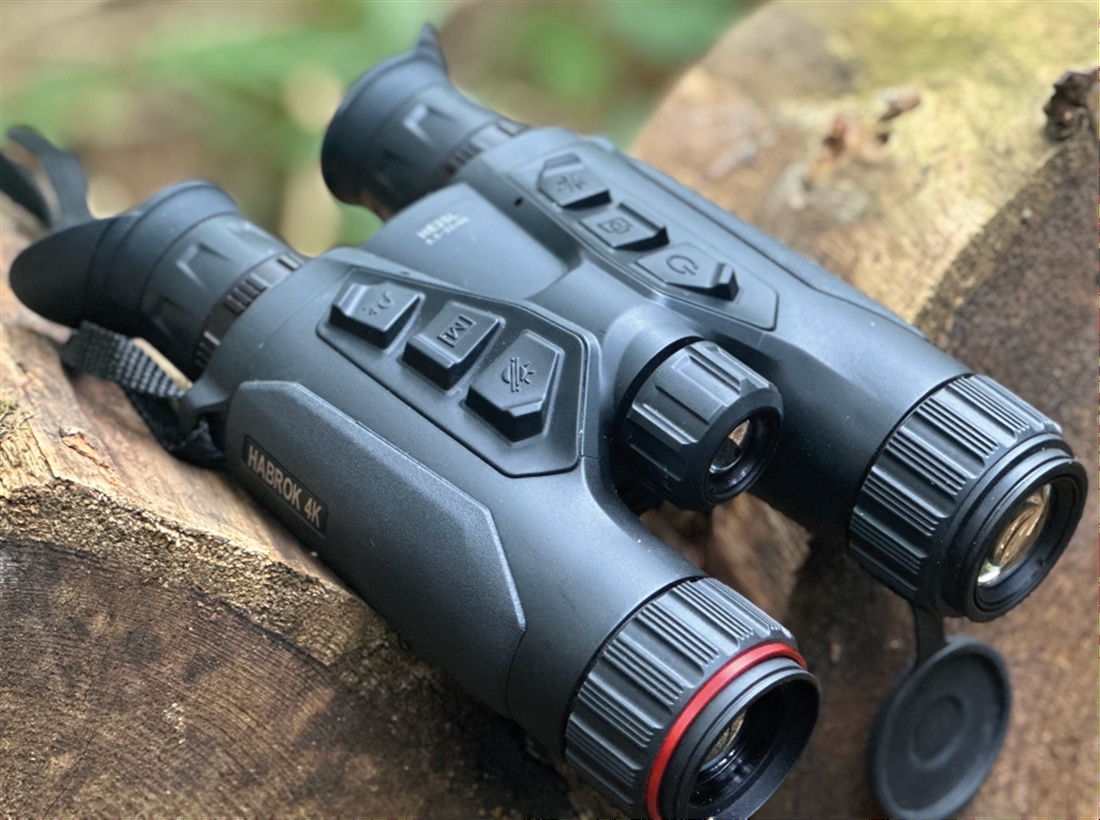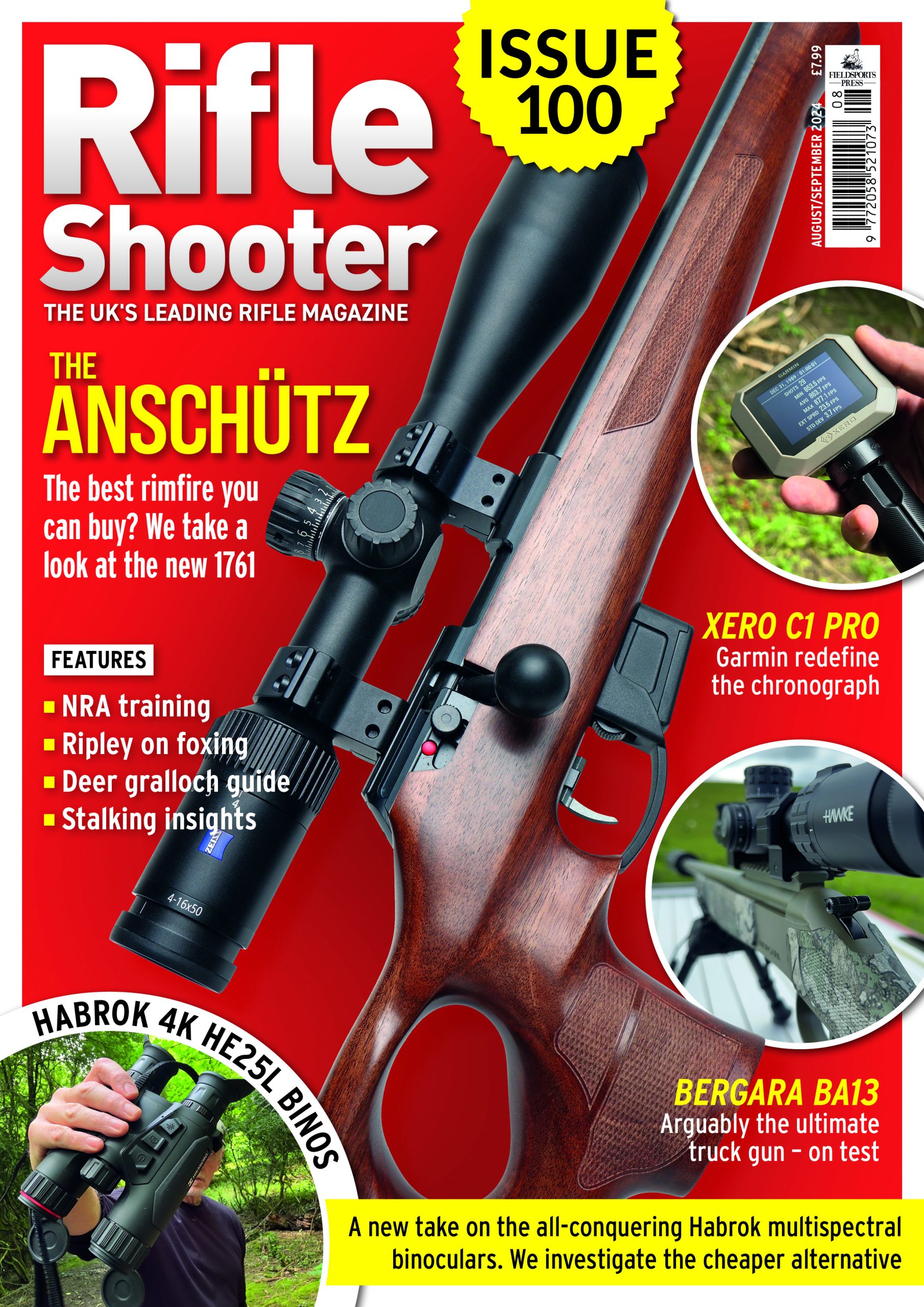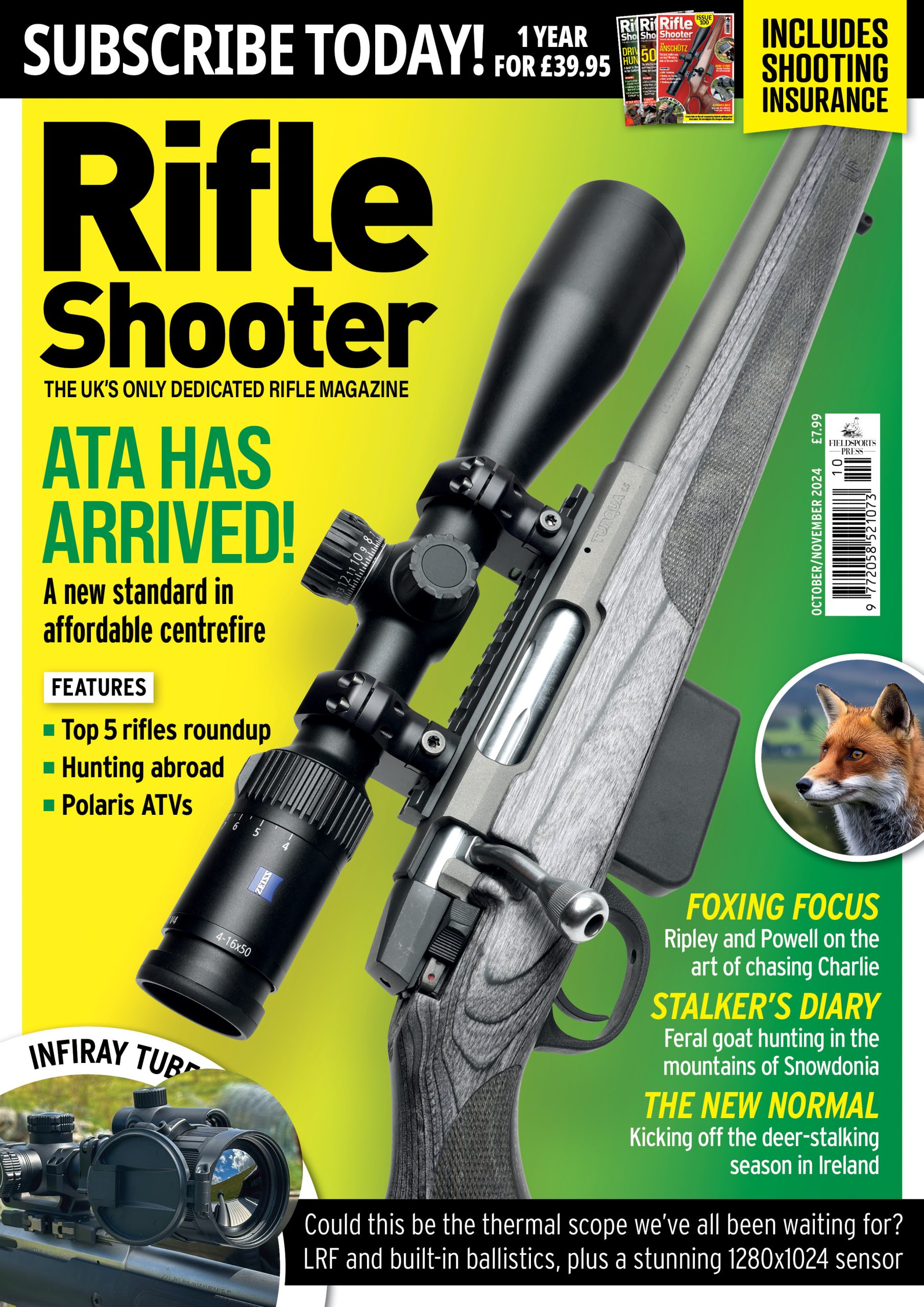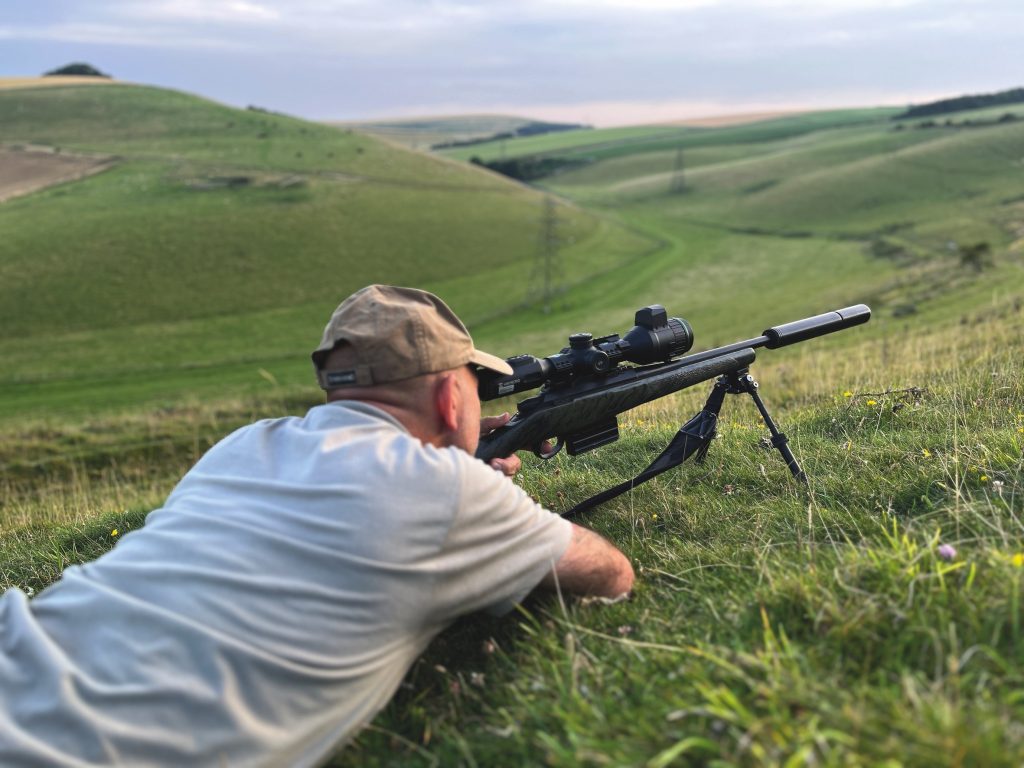HIKMICRO HABROK 4K HE25L
Paul Austin has a long hard look at an affordable take on Hikmicro’s multispectral binoculars. Deer stalkers take note!

I was in the process of putting the finishing touches to my recent Habrok HQ35L review when I was very surprised to spot yet another variant of the Habrok entering the fray. The ‘4K’ bit sounded intriguing, but I was puzzled as to why Hik were following up their latest release so closely with another multispectral gadget. Admittedly, Hik doesn’t exactly hang around when it comes to product launches, but this seemed a bit premature even for them. After a bit of digging, the penny dropped. Although virtually identical to its bigger brother at first glance, the Habrok 4K is a very different animal and targeted almost exclusively at the deer-stalking market.
So what’s the difference, other than the latest incarnation being less than half the price of its bigger brother? The only real physical difference is a 25mm thermal lens rather than the 35mm of the HQ35L. It’s under the bonnet where the real differences lie. The big change is the thermal sensor, which without a doubt accounts for the extra cost of the HQ35L. The new variant has a higher NETD of <35mK, as opposed to the <20mK of the original. However, the Habrok 4K only offers a 256x192 sensor, which is very small compared with the 640x512 of the high-end offering. It’s even smaller than the average 384x288, which many would consider to be an entry-level thermal.
In the Field
What does that mean in the field? The thermal on the HE25L is all about detection, not identification. The workflow with the unit is all about IR spotting ‘something’ with the thermal and then switching to an optical channel to confirm exactly what you’re looking at is key. With animals like deer, identification may not be an issue, but for assessing the condition and sex of the animal, you’ll definitely need the optical channels. For a deer stalker, this isn’t a bad compromise. You get the basics of thermal detection paired with excellent daytime imaging, functionality through a built-in illuminator for identification well beyond first-light/last-light, and an LRF to confirm the distance to your target.
For those who spend time ratting in the yard or hunting rabbits in fields with an air rifle or rimfire, this device shows real potential. You spot the target with the thermal, then switch to IR mode once you’ve locked onto it. A few years ago, a combination of low-res thermal, IR (thanks to the built-in illuminator), daytime optical, and LRF would have been a game-changer. At its current price, this kit still has great value for those not overly concerned about thermal image quality.
However, would this be a good option for a fox hunter looking to save over a thousand pounds on the Habrok HQ35L? Not really. For static targets like rabbits and deer, it’s fine, and for close-range ratting, identification with the thermal alone would still work. But for fox hunting, it’s a different story. Fox shooters often face fleeting opportunities where there’s no time to switch modes or fuss with settings. You need to quickly and confidently identify the target with the thermal and act before the opportunity is lost. This is where the HE25L’s bigger brother shines, offering that immediate capability. Occasionally, a static fox at a distance or at a tricky angle might render thermal identification challenging, even with high resolution. Often, it’s the animal’s gait and movement that gives it away, and that’s when a higher-resolution thermal becomes essential.
But much of that doesn’t apply to deer. They’re larger, often static, and almost impossible to misidentify unless they’re in deep cover. In such cases, thermal alone won’t help, and that’s where the optical channels are critical. As for image quality, the daytime channel on this device is excellent for a pair of digital binoculars, and the same can be said for the IR with its built-in illuminator. In fact, the illuminator is better aligned on this new model compared to its predecessor, and once again, the on-board night vision is outstanding.
One feature that could have been a welcome addition is some form of image stabilization. At higher magnifications, especially on the daytime channel, the image can get quite jumpy. However, this is an expensive feature to include, which likely explains its absence.
Technical Specs:
- Multispectral thermal binoculars with day color, night vision, and LRF
- 256×192 resolution @12μm thermal detector
- Thermal module NETD <35mK (@25°C, f1.0)
- 25mm, f1.0 lens
- 3840×2160 4K ultra CMOS detector
- 60mm, f2.2 digital lens with 5.5x to 22x digital zoom
- 1920×1080 resolution 0.49″ OLED display
- Weighs 795g, with a compact and ergonomic design
- Built-in 850nm IR illuminator and laser rangefinder with a 1000m measuring distance
The Bottom Line: For the technologically savvy and financially astute deer stalker, these binoculars are a very useful and affordable tool. While they may be less suited for a generalist shooter, the HE25Ls will no doubt find their way into the kit bags of many ratting and bunny-hunting enthusiasts, as well as their primary audience of deer stalkers.
In terms of ergonomics and features, this model is nearly identical to its predecessor, and there are no complaints there. Features like video recording (with audio), screen sharing via Hik’s Sight App, separate focus for optical and thermal channels, great design, easy navigation, and excellent optical image quality with great last-light performance are all present. And let’s not forget the LRF.
Related Articles
Get the latest news delivered direct to your door
Subscribe to Rifle Shooter
Elevate your shooting experience with a subscription to Rifle Shooter magazine, the UK’s premier publication for dedicated rifle enthusiasts.
Whether you’re a seasoned shot or new to the sport, Rifle Shooter delivers expert insights, in-depth gear reviews and invaluable techniques to enhance your skills. Each bi-monthly issue brings you the latest in deer stalking, foxing, long-range shooting, and international hunting adventures, all crafted by leading experts from Britain and around the world.
By subscribing, you’ll not only save on the retail price but also gain exclusive access to £2 million Public Liability Insurance, covering recreational and professional use of shotguns, rifles, and airguns.
Don’t miss out on the opportunity to join a community of passionate shooters and stay at the forefront of rifle technology and technique.




